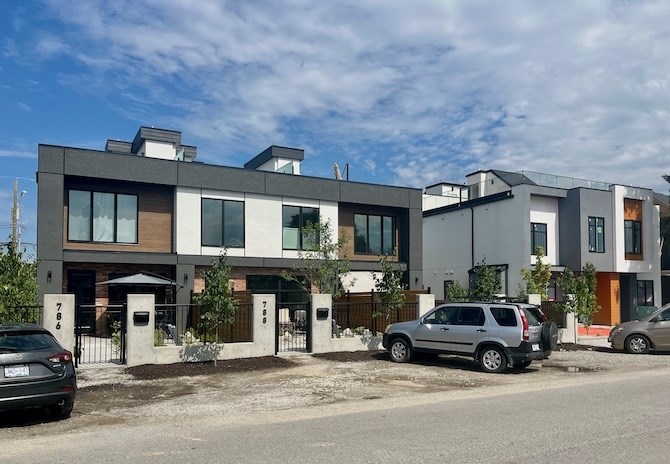Tale of two cities: Why Kelowna built more upzoned housing than Coquitlam

Kelowna and Coquitlam created similar policies to get more housing built, but each city had very different results and a new study has found out why.
Both cities were upzoned, meaning they allowed developers to put several homes like a fourplex on a piece of land that used to be for a single-family home. However, in Coquitlam few developers did so while in Kelowna multi-unit housing was popping up all over the place.
The study Upzoning and redevelopment: The details matter found that cutting through the red tape and speeding up the bureaucratic process was Kelowna’s key to success.
Faster building permit approval and lower parking requirements were the biggest differences between Coquitlam and Kelowna when it came to building more multi-unit housing.
The study found that getting development permits approved in Coquitlam could take years, but in Kelowna it could take as little as two weeks. Kelowna also only required one parking spot per unit while Coquitlam required two.
Tsur Somerville is one of the authors of the study and he said it seemed like Kelowna took to the challenge of building more housing as a priority.
“The government in Kelowna took it as a serious exercise of something they wanted to achieve. And so, as a result, they didn't just change the rules, they changed the process. And almost, you could say, the philosophy of the process,” he told iNFOnews.ca.
The study compared similar lots that were rezoned for multi-unit housing and found that developers built less than 10 units a year on average between 2019 and 2024, and in Kelowna developers built around 75 a year.
In October 2024, Coquitlam registered 184 new homes in multi-unit buildings, including apartment buildings, and Kelowna registered 408.
The provincial government passed legislation, like Bill 44, to force municipalities to update their housing bylaws to allow for more multi-unit housing.
Thomas Davidoff, another one of the study’s authors, said cases like this are why it’s important to keep an eye on how local governments implement laws that come from higher up.
“Telling municipalities they have to allow new housing is sort of like telling your kids they have to make their bed. You don’t know how long it'll take for that to happen and how many reasons that it can't happen,” Davidoff said. "Municipalities can come up with excuses."
Somerville said a lot of the focus can land on the policy and not how it’s implemented.
“Housing supply is not just what you can build, but how easy it is to build it. And that latter part is really, really important about looking at sort of two places that essentially had the same ‘what,’ but had very two different approaches to the ‘how’ and then had very different outcomes,” Somerville said.
To contact a reporter for this story, email Jesse Tomas or call 250-488-3065 or email the editor. You can also submit photos, videos or news tips to the newsroom and be entered to win a monthly prize draw. Find our Journalism Ethics policy here.
We welcome your comments and opinions on our stories but play nice. We won't censor or delete comments unless they contain off-topic statements or links, unnecessary vulgarity, false facts, spam or obviously fake profiles. If you have any concerns about what you see in comments, email the editor in the link above. SUBSCRIBE to our awesome newsletter here.







